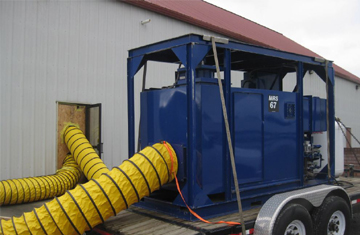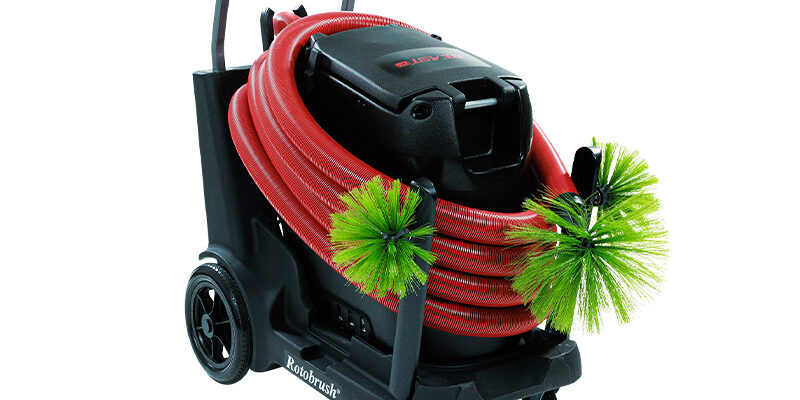How Desiccant Dehumidifiers Work (Part I)

Desiccant dehumidifiers utilize chemical attraction instead of condensation to remove water from the air.
Because they do not use condensation, they are not limited by low dew point temperatures, and when used properly, they produce the lowest vapor pressure of any dehumidifier.
Portable desiccant dehumidifiers work best in cool and/or dry environments. The cooler and drier the air going into the desiccant, the drier the air will be coming out.
Desiccant dehumidifiers contain the following key components:
A desiccant wheel with a grid of small air passages, similar to a large bundle of coffee straws, is impregnated with silica gel (the same silica that is used in the packets that keep shoes dry). The desiccant wheel rotates slowly through the different airflow zones of the desiccant, as it works to remove moisture. The size of this rotor and the speed at which it rotates varies depending on the unit’s specifications for target humidity and air volume. Most of the cost of desiccant dehumidifiers is in the desiccant wheel.
The blower on a desiccant moves the air through the desiccant wheel. Most portable desiccant dehumidifiers use a single blower. Normally, 75 percent of the air is dried and sent through the wheel, exiting the unit as warm, dry process air. The remaining 25 percent of the air is used to remove moisture from the wheel, exiting the unit as warm, wet reactivation air.
A heater boosts the temperature of this reactivation air, so that it can drive out the moisture that has collected on the desiccant rotor. Hot air removes moisture from the silica by adding enough energy to the water molecules to overcome the chemical attraction they have to the desiccant media (e.g., silica gel). This function of a desiccant dehumidifier requires a high level of power consumption.
Electronics include switches, sensors and a small motor that rotates the desiccant wheel and controls the unit’s operation.
Outlets and inlets are necessary to control the desiccant’s airstreams.
- Process air inlet: Where 75-100 percent of the unit’s airflow enters, and it typically contains a filter. Provide cool, dry air for best performance.
- Process air outlet: Where 75 percent of the air that entered the process inlet is returned as warm, dry, processed air for drying.
- Reactivation air outlet: Where 25 percent of the process inlet air or separate intake is exhausted as extremely warm, humid air. This air is normally exhausted outside of the building.
- Reactivation air inlet: Some desiccants have a fourth opening as a separate intake for the reactivation air.
Desiccants are commonly used to dry dense materials (hardwood floors, plaster and lath walls, etc.) due to the large vapor pressure differentials they can create between the surface and the air. Desiccants excel at large loss drying, because they can be made in virtually any size.
Desiccants do not collect water in a pan for automatic pump-out. Instead, they produce damp reactivation air, which must be vented outside the structure using temporary ducting. This venting often results in a pressure differential in the drying environment. The dry “process air” is ducted into the affected area.
Desiccant dehumidifiers range in size and configuration dramatically. Desiccants used in restorative drying can be as small as a roll-on suitcase or as large as two semi tractor-trailers. Large desiccants are often self-contained dehumidification systems, utilizing onboard generators and running on propane or diesel fuel. When large catastrophic events occur, such as hurricanes, large desiccants can provide a means of dehumidification when little or no power is available.
Click here for part two.
Brandon Burton is the technical education manager for the Restoration Sciences Academy (RSA), a part of Legend Brands. He teaches IICRC-approved classes in the categories of Applied Structural Drying (ASD) and Water Damage Restoration (WRT). Burton has served the restoration community for more than 15 years as an IICRC-approved instructor, ANSI/IICRC S500 chapter chair, RIA restoration council member and in many other industry roles. You can contact him at BrandonB@RSA-HQ.com. (Burton worked with various restoration experts at the RSA to produce this material, excerpted from the RSA’s comprehensive new textbook, The Complete Guide to Cleaning and Restoration. Special credit to Gary Funari, Gary Loiben and Bill Weigand.)












